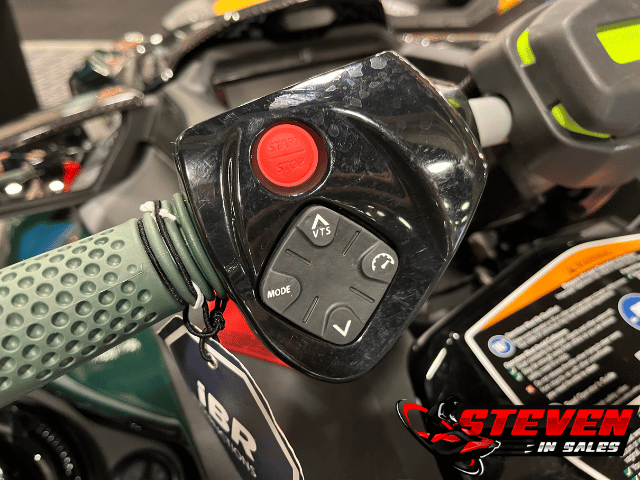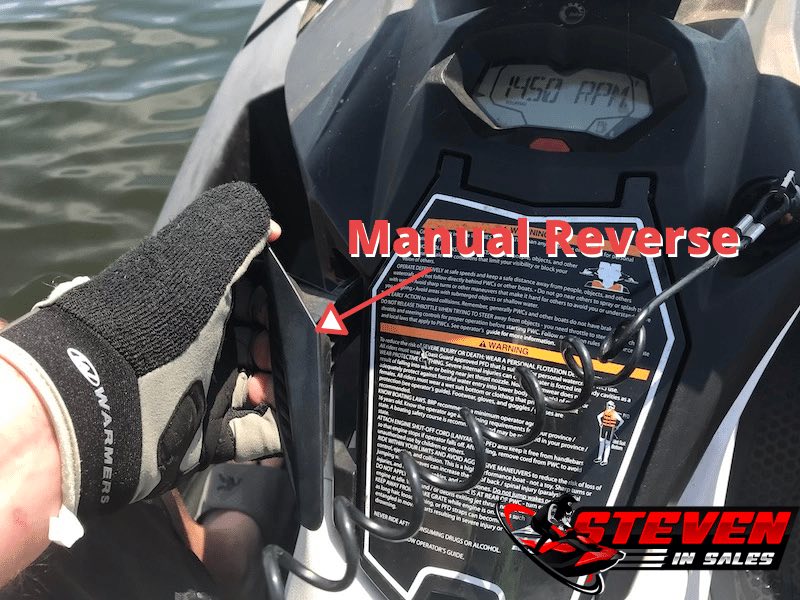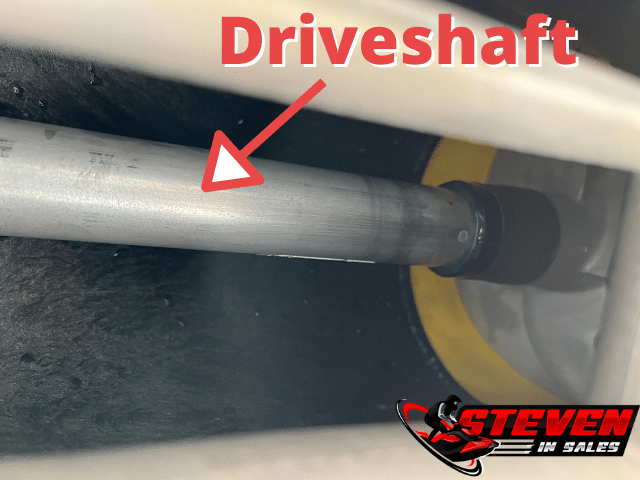Controlling a personal watercraft (PWC), is an exhilarating experience that offers riders a thrilling sense of freedom on the water.
However, mastering the art of maneuvering a PWC can pose significant challenges, especially for new riders. Unlike traditional boats, PWCs rely on jet propulsion systems and handle more like a motorcycle or snowmobile, requiring a unique set of skills and techniques to operate safely and effectively.
For beginners, there is a small learning curve, as they navigate through understanding the dynamics of docking, throttle control, steering, and safety protocols specific to PWCs.
In this guide, we’ll explore the details of controlling a PWC and answer the most common questions people ask.
Do Modern Jet Skis Have Some Kind Of Brakes?
Yes, most modern jet skis do have some kind of braking system. It operates through an electric actuator that lowers a reverse bucket to create drag.
This mechanism means that if you continue to hold the brake lever, the craft will eventually continue into reverse. Essentially, the braking process can be viewed as starting the PWCs reverse function.
However, it’s important to note that not every watercraft features a braking system.
Braking has made driving and docking so much easier, as shown in the video below.
Slowing Down Without Brakes & Docking
Without brakes, releasing the throttle will slow you down. While it’s not as immediate as braking, you’ll gradually reduce speed.
It’s crucial to remember that steering requires a bit of throttle. Without it, your steering capability decreases.
For docking without brakes or reverse, a practical technique is to spin the craft in a circle at idle speed. This action effectively kills your momentum. Once you’ve aligned with your desired direction, simply turn off the engine and glide smoothly towards your target.
Will Jet Skis Today Have A Reverse?
Yes, the majority of jet skis do, including many older models, have a reverse.
Typically, it’s only the most budget-friendly models that lack this feature.
The reverse function can be activated through a manual lever or a trigger on the handlebars, which operates an electric actuator to redirect the craft’s thrust. The manual lever option lacks a motor and depends on arm strength along with a spring for assistance.
The video below does a fantastic job showing the reverse bucket in action as it redirects the trust.
What Do Jet Skis Have For A Neutral?
Most modern jet skis do have some type of neutral, but it’s a balance point between forward and reverse.
There’s no true neutral because the impeller is connected directly to the engine, so it’s always processing water.
This gives you better control around the dock as you can steer in neutral, but it also means you need to shut the engine off once docked to keep the craft from wandering away.
How To Drive
The video below shows me riding a Sea-Doo going over the control systems.
History Of Watercraft Braking
I need to make a note of the history of braking for watercraft, as it’s not always been a thing.
Even to this day, a braking system is not for every model, some even lack a reverse!
Sea-Doo
In 2009, Sea-Doo revolutionized the watercraft industry by introducing the world’s first braking system, known as iBR (Intelligent Braking and Reverse).
Despite Sea-Doo’s initial emphasis on promoting suspension as their primary innovation, the effectiveness of the iBR system garnered widespread acclaim and numerous awards.
The success and popularity of this braking system were so significant that it prompted other leading manufacturers to develop and introduce their own versions of the technology.
Yamaha
Yamaha, keen on not being overshadowed by the market’s enthusiasm for braking technology, launched its own version in 2015, named RIDE.
Described by Yamaha as a “dual-throttle” system, RIDE represented the brand’s innovative response to the trend.
Although Yamaha positioned RIDE as a groundbreaking development, in essence, it was their strategic move to align with Sea-Doo’s advancements introduced six years earlier.
Kawasaki
As of 2022, Kawasaki has models with their own versions that slows you down when going at speed.
Kawasaki does it a little different, forward and reverse is done at the right handle bar.
iBR vs. RIDE Vs. KSRD
Sea-Doo holds the exclusive rights, including patents, to officially use the term “braking” for its system. While Yamaha’s and Kawasaki’s versions might not be identical, they are certainly commendable in their own rights.
Each system presents unique benefits.
For novices, Sea-Doo’s iBR system is notably user-friendly and forgiving. Yamaha’s RIDE shines in emergencies, providing robust performance. Meanwhile, Kawasaki’s KSRD stands out for its convenience, offering both forward and reverse levers on one side of the handlebars, which is particularly handy for docking.
Ultimately, all these technologies are effective, enhancing safety for boaters across the board.
Can A Manual Reverse Be Used To Slow You Down?
I get this one a lot.
Using the manual reverse lever as a way to slow you down at speed is not recommended.
Doing so above idle speed can damage the reverse system.
PWCs Don’t Use Transmissions
The engine is connected directly to the impeller by a driveshaft.
So if the engine is on, the impeller is spinning and the jet pump is processing water. This means you can still move even in neutral, just very slowly.
Sea-Doo uses iDF, which is very similar to transmissions, but you must shut the engine off to switch it, and it’s more about freeing debris.
How Reliable Are The “Transmissions”?
As mentioned before, these watercraft don’t utilize traditional transmissions; instead, they employ a bucket mechanism to redirect thrust.
This design, which essentially involves an electric motor moving a bucket, boasts simplicity and, in my opinion, reliability that often goes unrecognized. Initially, Sea-Doo encountered some challenges with their iBR system, but they significantly improved its performance over time, leading to what I consider a rock-solid system today.
It’s important to note a few things, such as ensuring your battery is in great condition. The reverse bucket mechanism can be quite power-intensive. A weak battery might trigger a check engine light, as the onboard computer detects insufficient power levels.
Can You Override iBR And RIDE?
If your watercraft encounters an issue where the bucket fails to move, leaving you stuck in the drive position, your options become limited.
Obstructions such as sticks or even straightforward manufacturing flaws can prevent the bucket from moving, effectively immobilizing you. In such cases, you may find yourself needing to swim back or use a folding paddle to return to shore.
However, if there’s no physical blockage hindering the bucket’s movement, and you need to examine the drive system, you got the possibility to manually override the system to raise or lower the bucket. The method of this varies across different manufacturers, but it’s a viable solution to regain control.



Great new article, thanks Steven! Quick ?. If I have a PWC with reverse but no brake (manual reverse – 2011 Kawi STX-15f), at what speed or point is it safe to pull the manual reverse lever? I have been doing it at idle speed while docking to control my speed approaching the lift arms. Is this bad? Does the ski need to be still and not moving to pull this manual lever? Thanks.
Idle speed is fine and what you’re doing is fine too. It’s the people who pull the reverse lever above the idle speed that damage things.
Cool, thank you!